This set of Mechanical Metallurgy Multiple Choice Questions & Answers (MCQs) focuses on “Element of Plasticity Theory – Flow Curve”.
1. The following flow curve shows the deformation behavior of the material in the plastic region. The material is deformed till ε1 and released; the material immediately reached to strain ε2. So, there is an instantaneous recovery of strain. This is called _________
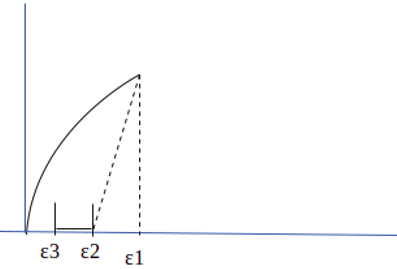
a) recoverable elastic strain
b) delayed elastic strain
c) snelastic behavior
d) plastic strain
View Answer
Explanation: Some of the applied plastic strain is recoverable in the material on releasing the load. But still the material will not reach the original dimension, and only some of the parts will be recovered immediately. This is called Recoverable elastic strain.
2. The following flow curve shows the deformation behavior of the material in the plastic region. The material is deformed till ε1 and released; the material immediately reached to strain ε2. And the time strain reached to ε3. So, there is a delayed recovery of strain. This is behavior of material is called _________
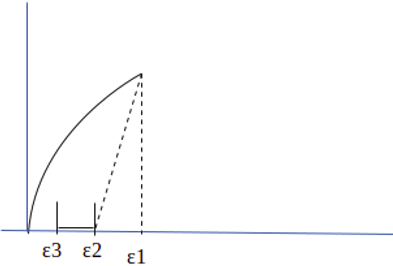
a) recoverable elastic strain
b) delayed elastic strain
c) anelastic behavior
d) plastic strain
View Answer
Explanation: Some of the applied plastic strain is recoverable in the material with the time if it left untouched. The material will not reach the original dimension, but some of the elongations will be recovered with time. This is behavior of material is called Anelastic behavior.
3. In the stress-strain curve, loading and unloading of the material in the elastic region follow the same path.
a) True
b) False
View Answer
Explanation: The material in the elastic region retakes its original shape on unloading. The shape of the stress-strain curve is linear, and the path of loading and unloading is the same. Following diagram will clear the picture.
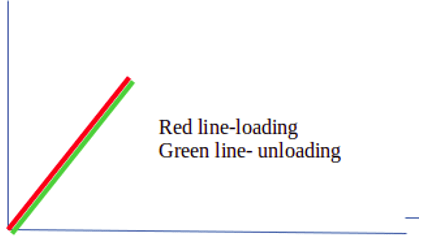
4. In the stress-strain curve, loading and unloading of the material in the plastic region follow the same path.
a) True
b) False
View Answer
Explanation: The material in the plastic regions does not take its original shape on unloading. So the shape of the stress-strain curve is non-linear, and the path is different on loading and unloading. The following diagram will clear the picture.
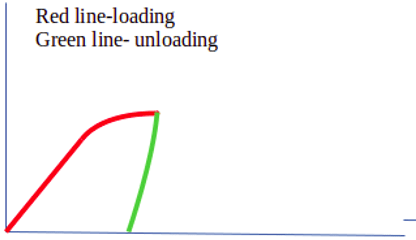
5. If the specimen is deformed plastically beyond the yield stress in one direction, e.g., tension and then after unloading it is loaded in the opposite direction, e.g., compression, it is found that the yield stress is less than the original yield stress. This dependence of yield stress on direction loading is called ____________
a) bauschinger effect
b) strain hardening
c) residual stress
d) nabarro–herring effect
View Answer
Explanation: Bauschinger effect is the phenomena which account for the difference in yield strength of the material in different directions of loading and unloading path. Following diagram show the effect.
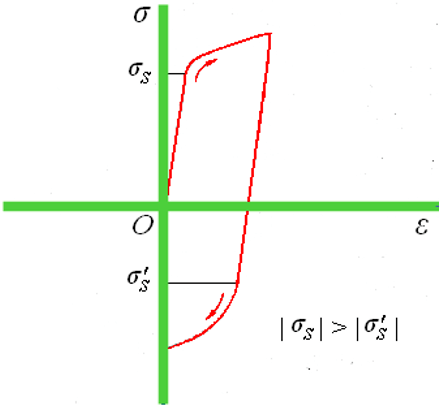
Strain hardening is a phenomenon in which the required stress increases for deformation with increases in strain. Residual stress is the remaining stress in the material after unloading. Nabarro–Herring effect is associated with creep.
6. The most common form to express the flow curve is:
σ=Kεn
Here σ=stress, ε=strain, n=strain hardening exponent, and K is defined as stress when ε = _______
a) 1
b) 0.5
c) 0
d) 0.33
View Answer
Explanation: In the following flow curve substitute the value of ε=1
σ=Kεn
=> σ=K(1)n
=> σ=K
So, K is defined as the value of stress when ε=1.
7. Which of the following curve represents the ideal plastic material?
a) 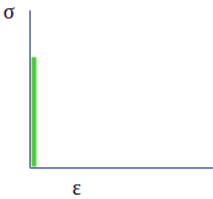
b) 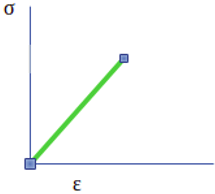
c) 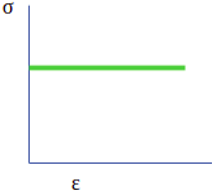
d) 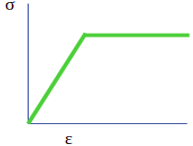
View Answer
Explanation: Ideal plastic material is the one which is deformed easily without causing any strain hardening in the material. Also, the linear elastic region should be absent in ideal plastic material.
8. Which of the following curve represents the ideal rigid material?
a) 
b) 
c) 
d) 
View Answer
Explanation: Ideal rigid material does not show any elongation with increasing stress. The strain remains the same until the failure point. Generally, material shows the both the elastic and plastic region.
Sanfoundry Global Education & Learning Series – Mechanical Metallurgy.
To practice all areas of Mechanical Metallurgy, here is complete set of 1000+ Multiple Choice Questions and Answers.
If you find a mistake in question / option / answer, kindly take a screenshot and email to [email protected]
- Check Metallurgical Engineering Books
- Practice Metallurgical Engineering MCQs
- Check Mechanical Metallurgy Books
- Apply for Metallurgical Engineering Internship
